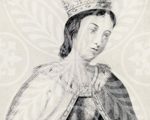
In this month’s expert talk, Lauren Browne discusses the reputations and representations of Eleanor of Aquitaine and Eleanor of Castile in the Tudor period.
[Read More...]
In this month’s expert talk, Lauren Browne discusses the reputations and representations of Eleanor of Aquitaine and Eleanor of Castile in the Tudor period.
[Read More...]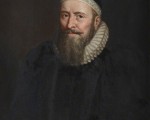
On this day in history, 4th February 1555, John Rogers, clergyman and Biblical editor, was burned at the stake at Smithfield.
Rogers was the first English Protestant burned in Mary I’s reign after being condemned as a heretic. he refused the chance of a last-minute pardon if he recanted, and died bravely. His wife and eleven children, one being newborn and at the breast, attended his burning. Martyrologist John Foxe recorded that Rogers “constantly and cheerfully took his death with wonderful patience, in the defence and quarrel of the Gospel of Christ.”
[Read More...]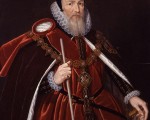
On this day in 1587, the Privy Council met in William Cecil, Lord Burghley’s chambers at Greenwich and agreed to send Mary, Queen of Scots’ signed death warrant to Fotheringhay. Burghley appointed the Earls of Shrewsbury and Kent to direct the execution, and the council agreed to keep Elizabeth in the dark until the deed was done.
[Read More...]
In today’s Claire Chats video, I talk (or perhaps ramble!) about what made a marriage legal and binding in the medieval and Tudor periods.
[Read More...]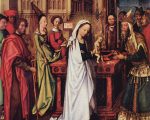
Yes, today is Candlemas, or the Feast of the Presentation of Christ in the Temple and the Purification of the Blessed Virgin. It commemorates the purification (or churching, as medieval people would have seen it) of the Virgin Mary forty days after the birth of Jesus Christ, when it was traditional for the mother to make an offering or sacrifice according to Jewish law, and the presentation of the baby Jesus at the temple in Bethlehem. It is the end of the liturgical season of Christmas tide and Candlemas Eve was also time to take down any Christmas decorations that you hadn’t taken down on Twelfth Night.
[Read More...]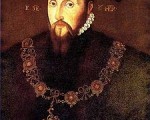
On this day in history, Tuesday 1st February 1547, the executors of Henry VIII’s will appointed Edward Seymour, Earl of Hertford, to the offices of Lord Protector of the Realm and Governor of the King’s Person.
Here is the record from Acts of the Privy Council:
[Read More...]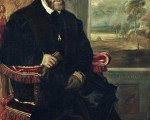
This is Part III of a four-part series, which seeks to look at what were considered the attributes of a Renaissance prince, and who of our four princes embodied the ideals of the Renaissance best. What were some of those themes? The idea of a Renaissance man stood for a person who strove to embrace knowledge and develop himself. This included concepts such as the arts, knowledge, physical achievements, and social ideals. More plainly and for a prince, this could include cultivating a court known for patronising artists, musicians, and the like; establishing educational institutions, a good degree of physical fortitude, and things such as chivalric love or engaging in acts of charity.
[Read More...]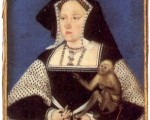
On this day in history, 31st January 1510, Catherine of Aragon, first wife of Henry VIII, gave birth to a stillborn daughter. It was her first pregnancy and she had been married to Henry for just over 7 months.
[Read More...]
On the 30th January 1554, Thomas Wyatt the Younger, son of poet and diplomat Sir Thomas Wyatt, and his fellow rebels besieged Cooling Castle, near Rochester in Kent.
[Read More...]
On this day in history, 30th January:
1520 – Birth of Sir William More, member of Parliament, Protestant and son of Sir Christopher More, a powerful administrator in Henry VII’s reign. More served Elizabeth I as Constable of Farnham Castle, Treasurer of the Lottery, Commissioner for Ecclesiastical Causes, Collector of the Loan, Chamberlain of the Exchequer, Master of Swans and Deputy Custos Rotulorum. He was also a commissioner on various commissions of oyer and terminer during her reign.
1531 – Death of Sir Robert Brudenell, Judge. He served Henry VII as King’s Serjeant and Henry VIII as Chief Justice of the Common Pleas. He was buried at Deene church, Northamptonshire.
1554 – Rebel Thomas Wyatt the Younger and his men besieged Cooling Castle, owned by George Brooke, 9th Baron Cobham. Cobham claimed that he had fought valiantly against the rebels for seven hours before surrendering to them, but his biographer points out that his resistance was most probably a “pretence”.
1593 – Ippolito Aldobrandini was elected as Pope Clement VIII.
1606 – Execution of Robert Winter and three of his fellow conspirators, at St Paul’s. He was hanged, drawn and quartered for his part in the Gunpowder Plot. His brother, Thomas, was executed the next day.
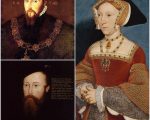
How much do you know about this famous Tudor family? Test yourself with this fun quiz by Rebecca Larson.
[Read More...]
Here’s the full edition of our full-colour 74-page February edition of Tudor Life Magazine. The theme this month is “16th Century Europe”.
[Read More...]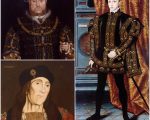
This day in history involves Henry VII, Henry VIII and Edward VI; grandfather, father and son. For it was on this day in 1457 that Henry VII was born, this day in 1547 that Henry VIII died, and this day in 1547 that Edward VI became king. What a day in history.
[Read More...]
In this week’s video, Sarah Bryson, author of Mary Boleyn: In a Nutshell considers the reputation of Mary Boleyn, sister of Anne Boleyn and a woman who is surrounded by myth and scandal.
Why does Mary have the reputation she does and what is it based on?
[Read More...]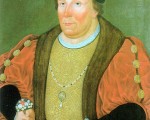
Hello, and welcome to my new series “The King’s Men”. Each month I will be writing an article exploring the life of one man that served Henry VIII. Some of these men had prosperous careers, reaching wondrous heights at court and exerting great influence under the King. Other men reached to high and met their end under orders of Henry VIII. However, each man left their imprint on Henry’s court and history, and it is the lives of these men that I will be exploring each month.
This month I will be looking at the life of Edward Stafford, 3rd Duke of Buckingham.
[Read More...]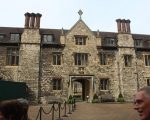
You may remember that back in September 2016 I visited London Charterhouse, former home of the Carthusian martyrs of Henry VIII’s reign and then of Baron North in Elizabeth I’s reign. I did a Claire Chat’s video on it the property and its history, and then shared some photos with you…
[Read More...]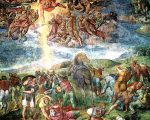
This feast day celebrates the conversion of St Paul (formerly Saul) on the road to Damascus. The story of the conversion of Saul, a man known for his persecution of Christians, is found in the Bible in Acts 9:
“And Saul, yet breathing out threatenings and slaughter against the disciples of the Lord, went unto the high priest, And desired of him letters to Damascus to the synagogues, that if he found any of this way, whether they were men or women, he might bring them bound unto Jerusalem. And as he journeyed, he came near Damascus: and suddenly there shined round about him a light from heaven: And he fell to the earth, and heard a voice saying unto him, Saul, Saul, why persecutest thou me? And he said, Who art thou, Lord? And the Lord said, I am Jesus whom thou persecutest: it is hard for thee to kick against the pricks. And he trembling and astonished said, Lord, what wilt thou have me to do? And the Lord said unto him, Arise, and go into the city, and it shall be told thee what thou must do. And the men which journeyed with him stood speechless, hearing a voice, but seeing no man.
[Read More...]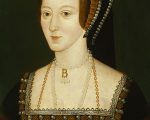
hank you to regular contributor Heather R. Darsie for this article on the famine of 1527 and how the common people may have seen it.
In the Tudor period, life was very much governed by the church, and people in England generally, at least outwardly, were religious and God-fearing. Witchcraft was thought to exist, and God could express his pleasure or displeasure, or otherwise send signs through any number of mediums. Did God try to warn Henry VIII, or even Anne Boleyn, that their courtship was ultimately doomed? By 1527, it was no secret that Henry VIII harboured an affection for Anne Boleyn. In May of that year, Henry was explaining to Cardinal Wolsey why he felt he was living in sin by having married his deceased brother’s wife. Cardinal Wolsey had been made legatus a legere, putting him in the position of the most powerful religious figure in England. Henry relied on a passage from the Christian bible, namely Leviticus 20:21, which states, “And if a man shall take his brother’s wife, it is an unclean thing: he hath uncovered his brother’s nakedness; they shall be childless.” Henry, of course, had his daughter Mary with Catherine, but no male heir and several stillbirths or infants who only lived for a few weeks. But this was not enough to ensure the Tudor dynasty.
[Read More...]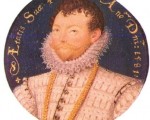
On this day in history, 23rd January…
1516 – Death of Ferdinand II of Aragon in Madrigalejo, Extremadura. He was laid to rest in la Capilla Real, the Royal Chapel of Granada. Ferdinand was the husband of Isabella I of Castile and the father of Catherine of Aragon, Henry VIII’s first wife. Ferdinand was succeeded by his daughter, Juana (Joanna), who ruled jointly with her son, Charles, who became King Charles I of Spain.
1540 – Birth of Thomas Egerton, 1st Viscount Brackley and Lord Chancellor to James I. Egerton was the illegitimate son of Sir Richard Egerton, a landowner from Cheshire, by a servant girl.
1552 – Parliament met to discuss the revision of the 1549 “Book of Common Prayer”.
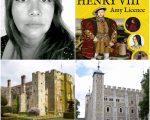
A big welcome to historian Amy Licence who is joining us today to kick off her book tour for her children’s book All About Henry VIII. It’s a wonderful book, as are the others in the series, and you can enter the giveaway to win a copy of this book by leaving a comment before midnight on 27th January 2017. Simply comment below this post saying which historical place linked to Henry VIII you’d like to visit and why. One comment will be picked at random and the winner contacted.
[Read More...]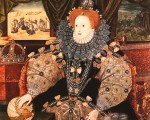
How much do you know about Elizabeth I, Gloriana, the Virgin Queen, Good Queen Bess? Test your knowledge with this fun quiz. Good luck!
[Read More...]
On 22nd January 1554, Thomas Wyatt the Younger met with fellow conspirators at his home of Allington Castle in Kent to make final plans for their uprising against Mary I and her decision to marry Philip of Spain.
[Read More...]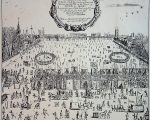
In this week’s video, Claire talks about the Little Ice Age and the Frost Fairs that were enjoyed on the frozen River Thames.
[Read More...]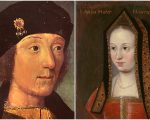
On this day in history, 18th January 1486, the twenty-nine-year-old Henry VII married the twenty-year-old Elizabeth of York.
They made a striking couple. Elizabeth of York had classic English Rose looks – blonde hair, blue eyes and fair skin – and Henry was tall, slim, dark haired and handsome. They were the perfect couple, and their marriage brought hope to the country. It reconciled the warring Houses of Lancaster and York, and began a new royal house and era: the Tudor dynasty.
[Read More...]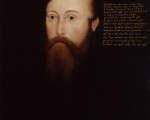
On this day in history, 16th January…
1486 – The Bishop of Imola, the papal legate, authorised the marriage of Henry VII and Elizabeth of York, which was due to take place on 18th January.
1501 – Birth of Sir Anthony Denny, courtier and close friend of Henry VIII, at Cheshunt. He was the second son of Sir Edmund Denny and his wife, Mary.
1549 – Thomas Seymour was alleged to have broken into Edward VI’s apartments at Hampton Court Palace to kidnap the young King. Click here to read more about this incident.
1558 – Death of Thomas Alsop, Chief Apothecary to Henry VIII and Serjeant of the Royal ‘Confectionary’ to Edward VI. He was buried in St Mary Woolchurch.
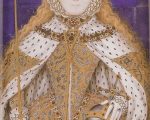
On 15th January 1559, a date chosen by her astrologer Dr John Dee, a triumphant Elizabeth Tudor, daughter of Henry VIII and Anne Boleyn, processed from Westminster Hall into Westminster Abbey to be crowned queen. She was just twenty-five years old, was the third child of Henry VIII to become monarch, and was the longest reigning of them, ruling England for over 44 years.
Elizabeth’s coronation day began in Westminster Hall, which had been decorated with her father’s sumptuous tapestries and his collection of gold and gilt plate. Blue cloth had been laid from the Hall to the Abbey, and Elizabeth, wearing her crimson parliament robes, processed along this cloth, which was then torn to shreds by people as souvenirs.
[Read More...]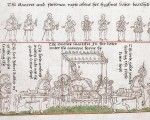
On 14th January 1559, the eve of her coronation, Queen Elizabeth I processed from the Tower of London to Westminster in a cloth of gold covered litter carried by two mules.
[Read More...]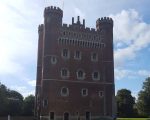
Sarah Bryson talks about her time visiting Tattershall Castle, and the wonderful history of the site. Her highlight? The 20 mile view from the top of the Tudor tower.
[Read More...]